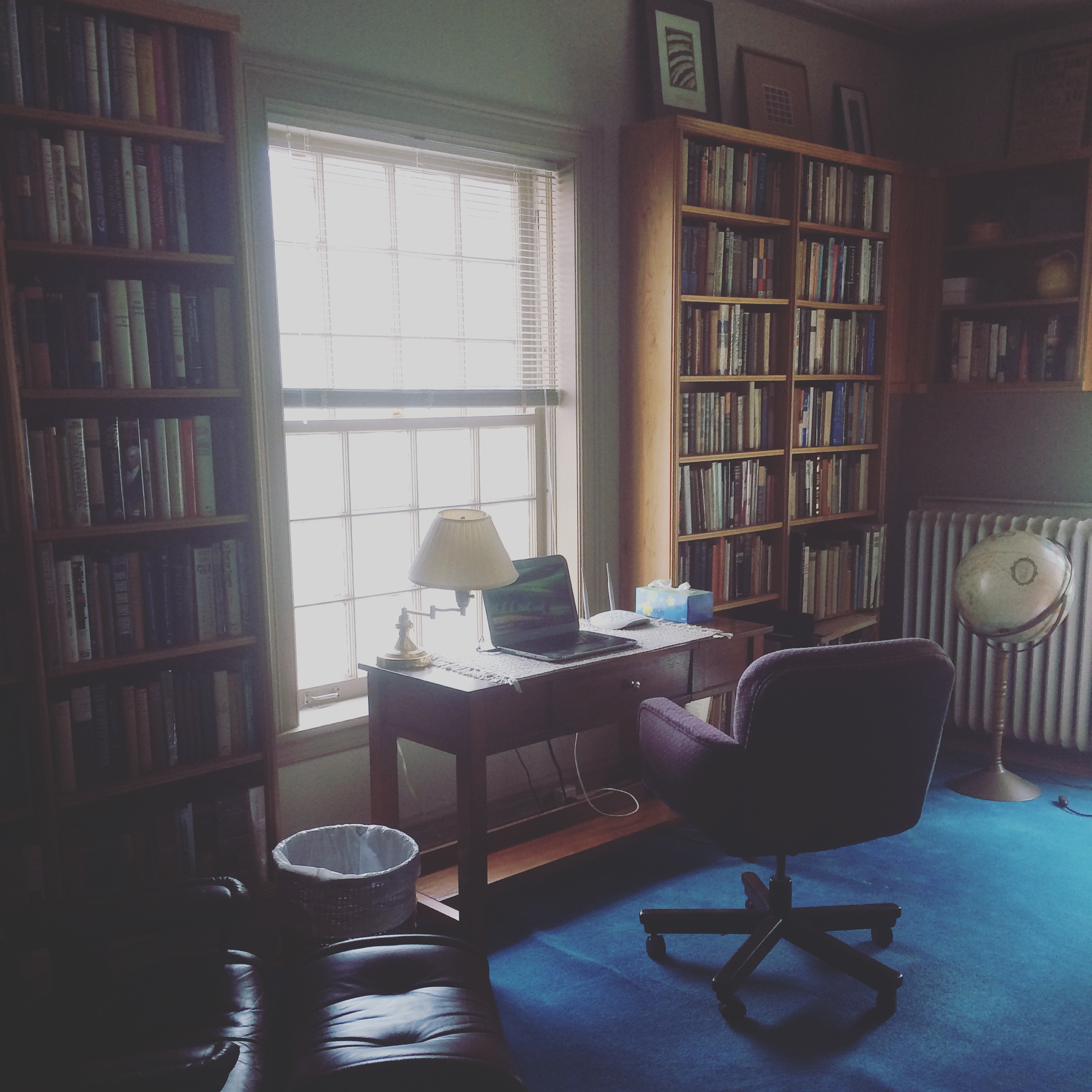Life getting in the way of your writing? If you’ve been thinking, “My book would be finished already, if I could just get away somewhere quiet and write for a few weeks — away from work, responsibilities, everyone I’ve ever met, sushi restaurants, Pokemon Go….” — then it might be time to consider a writing residency.
Writing residencies, for those unfamiliar with them, basically give you a place to get away from your regular life for a little while, so you can focus on your writing. To get a residency, you generally need to put together an application with a writing sample, artist’s statement, work proposal, CV, and/or other materials. There are hundreds of different writing residencies offered around the world (Poets & Writers keeps a good, if incomplete, list), and they all have different application processes. Each application requires time, effort, and money (there’s usually an application fee) on your part — So it’s a good idea to pick wisely the places you decide to apply.
I’m actually in the middle of a writing residency at The Anderson Center at Tower View right now — in a tiny town called Red Wing in Minnesota! Here, I’m living in a big, historic house with two other writers — Kim Todd (author of Chrysalis — a biography of Maria Sibylla Merian — and two other books) and Kendra Atleework (read her essay in The Best American Essays 2015!) — and two visual artists, all of us working on our creative projects. I asked Kim and Kendra what they looked for when considering a residency. Here are their tips, combined with mine:
1. Consider the cost. Residencies run the gamut. There are the coveted ones that make you feel like a pampered rockstar because everything’s covered. You get a private room of your own, a writing studio, chef-cooked meals, and other nice amenities — so all you pay for is your plane ticket there. The Anderson Center is one of these. Kim says Macdowell goes even a step farther; when she was there, her lunches were delivered to her studio door.
Others call themselves writing residencies but are basically like vacation rentals or bed and breakfasts targeted towards writers. For these, you pretty much just pay to get away — usually in the form of a weekly or monthly fee. A bunch of residencies fall somewhere in between, offering partial scholarships, reduced fees or small stipends to help writers out.
So if you’re on a budget like most writers, cost is an important factor to consider — which is why I’m listing it first.
2. Like the location.. Kim says she likes to do residencies in places that are “totally gorgeous” — which isn’t surprising, since she writes primarily about nature and the environment. The Mesa Refuge got a big thumbs up from her for this reason (among others).
I have my own location-related quirks — which actually keep me from applying to residencies that are have, um, too much nature. Some residencies — like national park residencies that have you live on a campsite or trailer out in the middle of nowhere — would not make for a productive time for me, since I really like modern amenities and am scared of bears!
If you love camping though, these kinds of residencies may be right up your alley. And overall, the weather, the size of the town, and recreational opportunities might be things you want to consider.
3. Pick a length of time. Residencies generally run between a week and two months, most falling between two and four weeks, some longer ones running on for several months. So think about how much time you can get away — and how long you want to get away.
For Kim, two weeks is about as long as she can stay at a residency, with two young kids at home. I’m staying at The Anderson Center all of July; if my little window cactus at home dies from neglect, so be it.
4. Know your (future) neighbors. Most residency websites list bios of current and past residents. I think it’s a good idea to check these out before you apply, so you have a sense of the caliber and seriousness of the work your fellow residents will be doing. Kim says that when she was at Macdowell, “The level of work people were doing was astounding.” She felt inspired by their output.
Some residencies are just for writers; others invite artists and scholars working in a variety of fields. In addition, some residencies focus on or give special consideration to specific population groups. Hedgebrook, for example, is an all-women residency program.
Other residencies court writers from specific states, backgrounds, or life circumstances. The Anderson Center, for example, is generally open to all, but dedicated last month to deaf American artists. This month, The Anderson Center is hosting a writer from the University of Minnesota’s MFA program — which is how Kendra, recent MFA grad, got a spot here.
And some residencies just host one resident at a time. This might work well for you if you really, really want to get away from everyone. If you think, though, that writing all alone for weeks at a time will end up creating a situation like The Shining for you, you might want to stick to the group residencies.
5. Think about your resume. Getting a prestigious, competitive residency means you can then list said residency on your CV — which can be helpful, especially if you work in academia or teach (or want to teach) writing. How do you know a residency is prestigious? You’ll often hear their names mentioned by other writers. Beyond that, I’ve found that the prestige of a residency is often related to its cost — meaning that the most prestigious, competitive residencies tend to be the ones that also cover most or all the costs of your stay.
___
Of course, once you pick out which residencies you’d like to go to, you’ll need to put an application together to actually get in to those residencies. My poet friend Xochitl-Julisa Bermejo recently wrote a post about just that — specifically targeted to help emerging writers. And if you’re looking for individual help to get your applications into shipshape, my friend Sarah Cypher, a.k.a. The Threepenny Editor, offers polishing reads.
A final note: Just so you know if you’re considering a residency here at The Anderson Center, while you’ll be able to escape from most distractions (I don’t have wifi in my room, which has been a blessing!), you will not be able to escape Pokemon Go. Since that game launched, many a Red Wing resident have come wandering through the Center’s sculpture garden and nature walk, cell phones in hand. I don’t know what they’re looking for exactly, because so far, I’ve resisted the game. I’m here to write!

